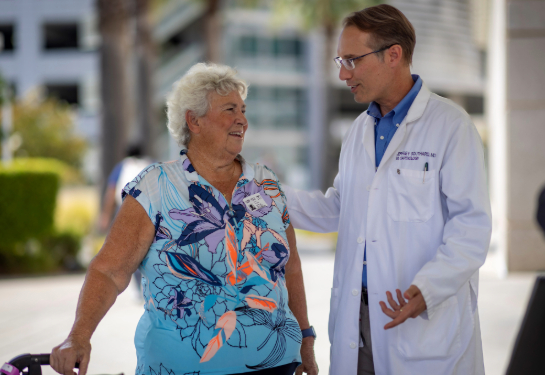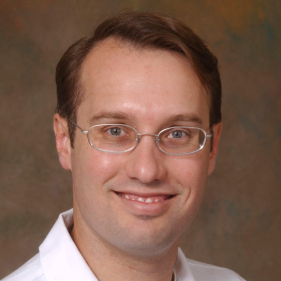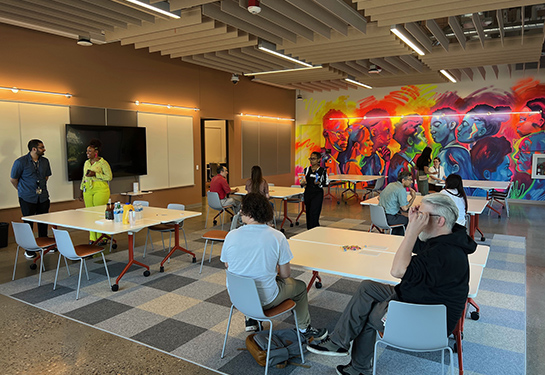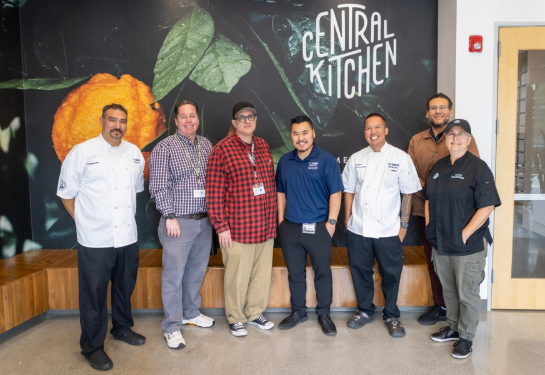How one family trusted the same UC Davis Health heart care team across generations
A father and daughter turned to the same doctors for lifesaving TAVR procedures — 12 years apart
Facing an upcoming surgical procedure often brings stress and anxiety, but not for Della de Corse. When she learned she would undergo a Transcatheter Aortic Valve Replacement (TAVR), she felt calm and confident.
That’s because the heart doctors were familiar figures for her family. Twelve years earlier, she had watched the same team of UC Davis Health physicians perform the very same procedure on her father.
“I was not apprehensive at all about having a TAVR procedure,” de Corse shared. “I had seen firsthand the work of these doctors. I expected excellence — and that’s exactly what I received.”
A true trailblazer
Her father, James Owen Carleton, defied logic and expectation.
“My dad’s life was a testament to unshakable grit and relentless drive,” explained de Corse. “He was a true trailblazer in every sense.”
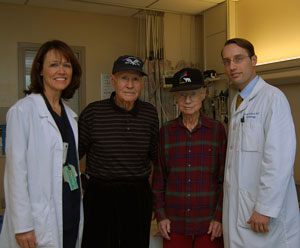
As a child, Carleton survived a rattlesnake bite, and just a year later, endured a broken back after being run over by his father's car. At 14, during the Depression era, he left school to work full-time and support his family. And perhaps most remarkably, at 55, he took up tennis. He eventually rose to become the world’s top-ranked doubles player at the age of 85, competing in the prestigious Talbert Cup in Austria.
Carleton also lived his life with a heart murmur. One day, during a tennis match in his hometown of Redding, he collapsed, and his heart stopped. After being revived, he went to the emergency room. Tests revealed he was suffering from aortic valve stenosis, a narrowing of the aortic valve that restricts normal blood flow. With no available drug therapy for severe cases, the only option was valve replacement through open-heart surgery, Carleton was told.
Alternative to open-heart surgery
He was referred to UC Davis Health for further evaluation. There he met with Reginald Low, clinical professor of interventional cardiology and Jeffrey Southard, professor of interventional cardiology.
In a remarkable stroke of timing, the U.S. Food and Drug Administration (FDA) had approved a new minimally invasive procedure called transcatheter aortic valve replacement (TAVR) on the very day of his first appointment at UC Davis Health.
TAVR offered a groundbreaking alternative to traditional surgery for select patients. Particularly those who were 91years old like Carleton and were deemed too high risk or “inoperable” for conventional open-heart surgery.
Unlike open-heart surgery, TAVR replaces the damaged valve without removing it. A new valve is delivered via catheter and positioned inside the old one, which then holds the new valve securely in place. The procedure can be performed using different approaches, depending on what’s safest and most effective for the patient.
“We have learned TAVR patients typically experience a much faster recovery compared to traditional valve replacement. It’s a highly effective option for patients who might otherwise have limited choices in treating their aortic stenosis.”—Jeffrey Southard
After consulting with Low and Southard, Carleton continued his trailblazing path and chose to undergo the TAVR procedure. He became the second patient at UC Davis Health to receive the treatment, just two hours after the first. UC Davis Health was the first medical center in the Sacramento region to perform a TAVR procedure. This marked a major milestone in the advancement of cardiovascular care in the area.
Carleton spent just one night in the hospital following his procedure. Remarkably, only 10 days later, he was back on the tennis court.
“The care my dad received at UC Davis was extraordinary,” shared de Corse, who was his primary support throughout the procedure. “I was so impressed that I knew if I ever needed care for my heart, I’d want the same doctors and care team.”
Like father, like daughter
Twelve years after supporting her father through his groundbreaking heart procedure, de Corse found herself facing a similar journey. During a routine checkup, her doctor noted that the heart murmur she had been diagnosed with a few years earlier had worsened. Concerned, the doctor ordered an echocardiogram to investigate further.
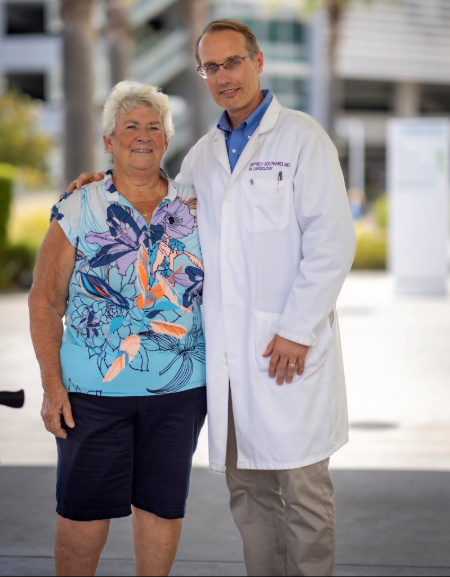
Della de Corse with Jeffrey Southard, the physician who performed both her and her father’s TAVR procedures.
The following week, while visiting Truckee, de Corse experienced shortness of breath, likely triggered by the high altitude. Struggling to breathe, she grew increasingly alarmed.
When the echocardiogram results came back, they confirmed what she had feared — like her father, she was suffering from aortic valve stenosis.
“When I heard the news, I knew exactly which doctors I wanted to see,” de Corse said.
In July, De Corse underwent her own successful TAVR procedure. It was performed by Southard, the same physician who had treated her father in 2013.
“I mean — why wouldn’t I want him to do my procedure?” de Corse said with a smile. “As far as I’m concerned, he and his team are the best in the world.”

